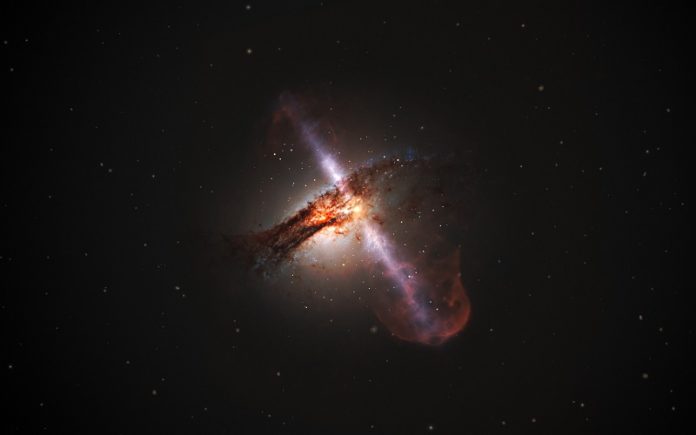
New research has discovered how galaxies avoid an early death. Just like our bodies have a heart and lungs to keep us alive, galaxies have similar features that regulate their “breathing” and keep them from growing too big too fast.
This discovery helps explain why galaxies are not as enormous as scientists once expected.
Without this regulation, the universe would have aged much faster, and all we would see today would be huge “zombie” galaxies filled with dead and dying stars.
This study was published in the Monthly Notices of the Royal Astronomical Society.
The mystery of why galaxies aren’t as large as we thought comes down to something limiting the amount of gas they absorb to turn into stars.
This means that galaxies don’t keep growing indefinitely, as gravity alone would suggest.
Astrophysicists at the University of Kent think they have found the answer. They propose that galaxies control their growth by “breathing.”
In their analogy, the supermassive black hole at the center of a galaxy is like its heart, while the two bi-polar supersonic jets of gas and radiation it emits are like airways feeding a pair of lungs.
The black hole’s pulses cause these jets to act like bellows, creating a “breathing” motion that spreads energy throughout the galaxy.
This motion helps slow down the amount of gas that the galaxy can absorb, thereby controlling its growth.
Carl Richards, a Ph.D. student, developed this theory using new simulations. These simulations allowed the black hole “heart” to pulse and the jets to operate under high pressure, mimicking hypertension in the human body. This setup caused the jets to send out sound waves, similar to ripples on a pond.
Richards explains that these high-pressure jets expand and contract “like air-filled lungs,” transmitting sound waves into the surrounding galaxy. These sound waves create pressure ripples that suppress the galaxy’s growth by slowing down gas accumulation.
Interestingly, there is evidence of these ripples in real galaxies, like those observed in the Perseus galaxy cluster. These ripples are thought to be sound waves generated by jets from a supermassive black hole. Until now, scientists didn’t understand how these waves were produced.
The researchers’ simulations showed that when the black hole’s heart pulses, it sends energy into the jets, causing them to change shape and expand. This expansion generates sound waves that ripple through the galaxy, helping to sustain its surrounding environment and prevent rapid growth.
These findings suggest that a galaxy’s lifespan can be extended thanks to its “heart and lungs.” The supermassive black hole at its core helps to limit the amount of gas turning into stars from an early stage. This regulation mechanism has helped shape the galaxies we see today.
Without this process, galaxies would have used up their fuel long ago, becoming “red and dead” or “zombie” galaxies. This new understanding sheds light on one of the universe’s great mysteries and shows how galaxies manage to survive and thrive over billions of years.



